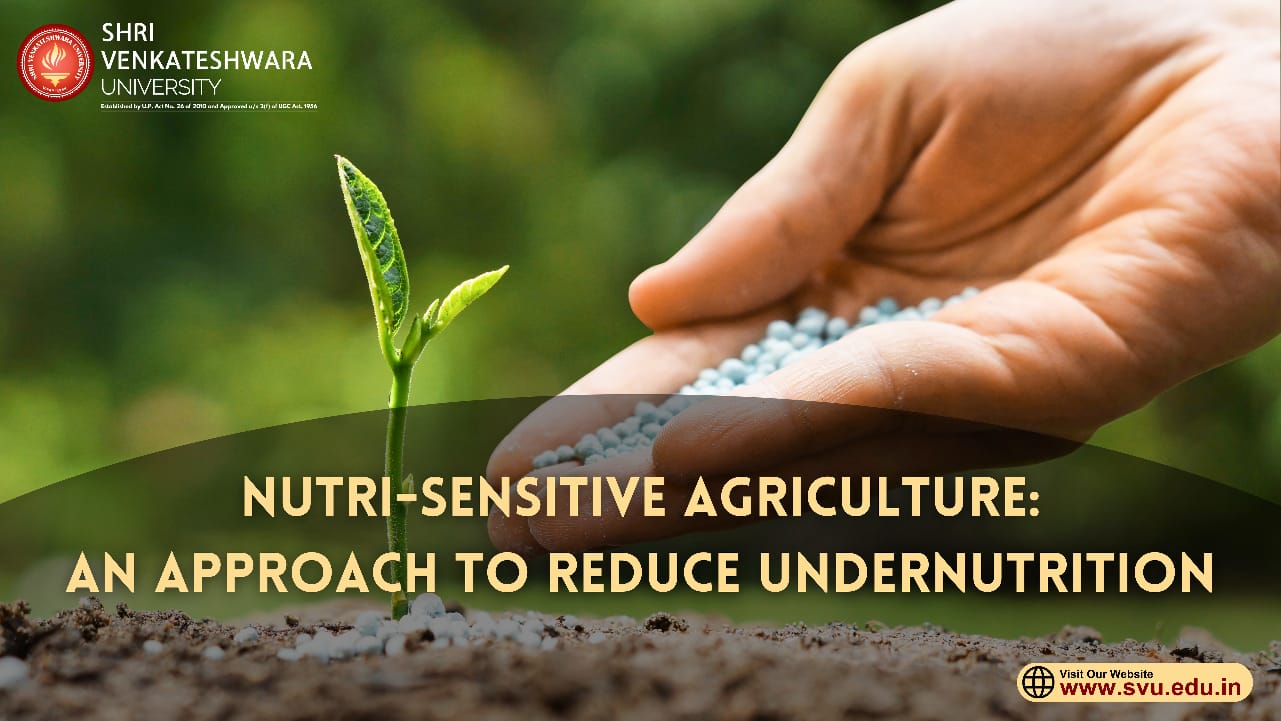
Nutri-Sensitive Agriculture: An Approach To Reduce Undernutrition
Where do we stand on Global Hunger Index 2023?
Agriculture sector growth has contributed mainly to economic growth in India over the past several decades, but improvements and nutrition remains a major concern. Malnutrition is an utmost dilemma and India ranks 111th out of the 123 countries with a score of 28.7 in the 2023 Global Hunger Index, our country has a level of hunger that is serious. The reasons might have included overlapping crises, overpopulation, the covid-19 pandemic, Russian-Ukraine war, Economic downturns, reduce in agricultural production due to climate change.
India’s nutrition status and strategy to reduce hidden hunger.
Our country has been suffering from poverty, hunger and malnutrition, especially in the rural areas, for many past years and the data has not changed to a greater extent than the present time. Around 250 million people live in poverty and about 47 million children under 5 years are suffering from malnutrition. The growing number of malnourished, under with and stunted children, leaving them vulnerable to the chronic and often as reversible effect of poor nutrition issues must be resolved yet. According to NFHS-5 data, India has more stunted children in rural areas (37.3%) than in urban areas (30.1%), possibly due to the lower socioeconomic status of rural households. To address the high burden of stunting, the intergenerational cycle of malnutrition must be addressed with effective interventions for both mother (pre- and post-pregnancy) and child. To cope up with such situation, an approach known as “Nutrition Smart Agriculture” has come into play which can ensure production of variety of nutritious, culturally appropriate, safe and affordable foods in adequate quantity and quality to meet dietary requirements of people in a sustainable manner. For making agriculture and food system nutritionally rich requires actions to address input quality, production, post-harvest handling, processing, retailing and consumption and deliver safe and nutrient rich foods throughout the year to the consumer.
The approach emphasized fulfilling the daily intake of fruits, vegetables, and pulses—which are high in a variety of nutrients, including vitamins and mineral. More importantly, this strategy aimed to provide a family nutritional security all year long. The program is focused on empowering farm women with key areas like innovative practices to promote nutrition sensitive agriculture, aware and capacity development of various stakeholders, value chain, little campaign, will be emphasized. This program also aims to improve links and implementation of new production technologies in the agriculture food system and developments for good health and for development of agricultural value chains rich in nutrients through nutritional research. Agricultural research are majorly focusing on addressing nutritional deficiencies and the critical role of small-scale farmers in nutritional security. Keeping poor households on target, promoting gender equity, and providing nutrition education to people, as well as interventions that can increase the ability of female farmers through self-help groups (SHGs) to grow fruits and vegetables on a small trial scale in their backyards and organized garden with a variety of crops to improve the family's food and nutritional security. Organic farming is used to raise a variety of products, including fruits, spices, and green vegetables.